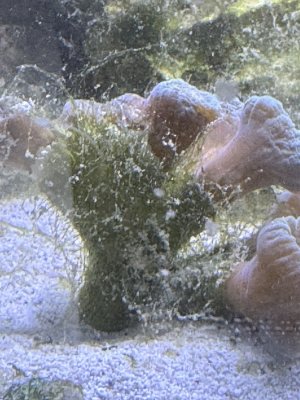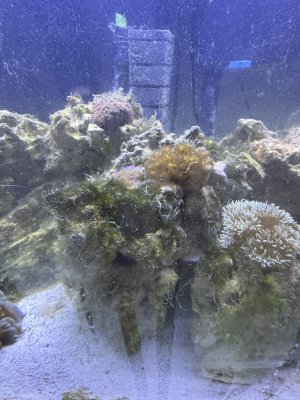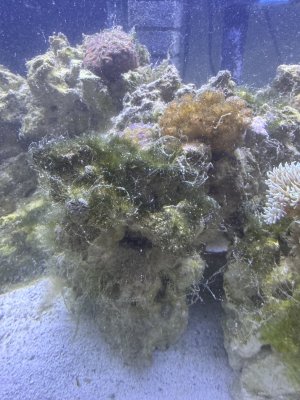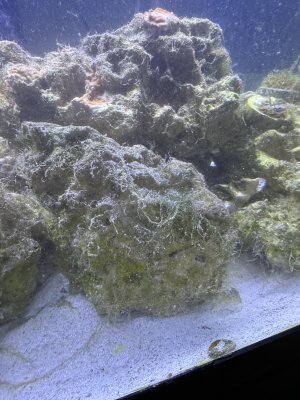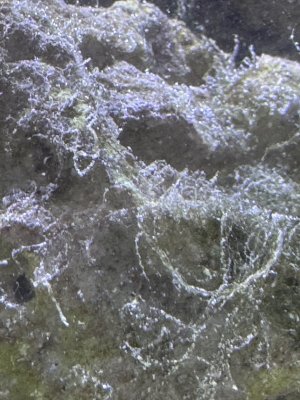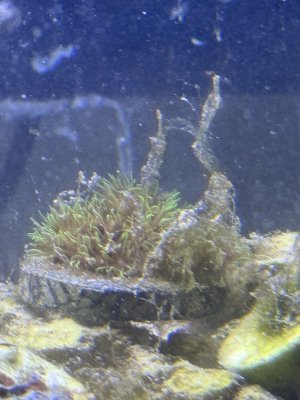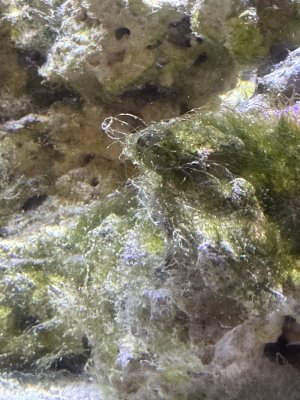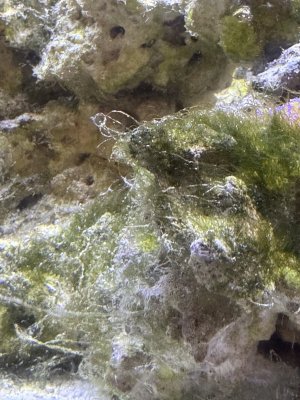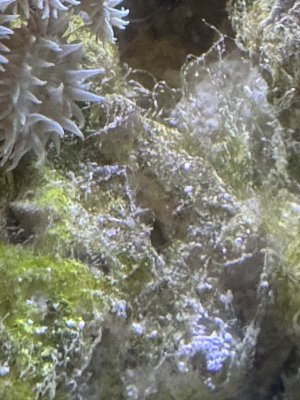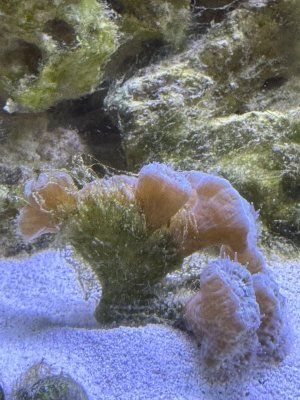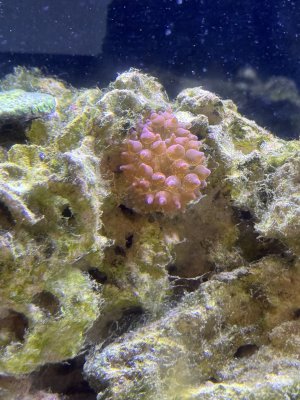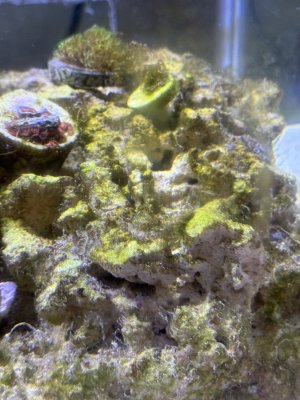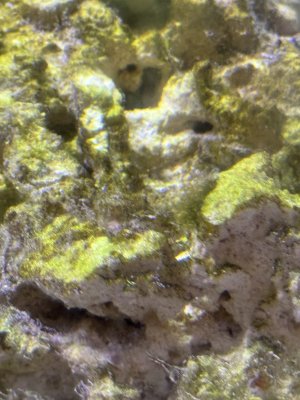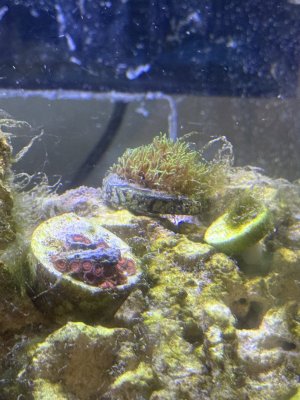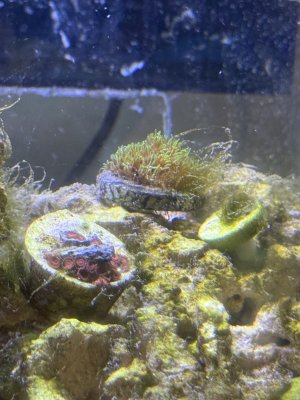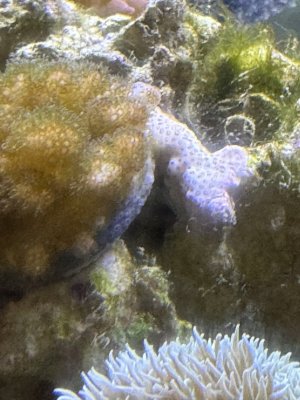Nitrates are 0 or .4, depending on the reading from my Hanna nitrate HR. Phosphates are .09 or .04, again depending on the reading from the Hanna phosphate ULR.
Magnesium is 1360
Calcium is 400
Did a 3 day blackout when my previous tank sprung a leak and things improved greatly. Now we are going the other direction again, rapidly. I am almost positive there’s some hair algae in there, but I don’t know if that’s Dino’s or no.
I was convinced it was hair algae previously and wondered if part of the problem was that I have a HOB refugium that is see through on the back. I realized that my refugium light was shining at night and hitting the tank. I’ve blacked that out, but now I’m wondering if I should run my refugium light at the same time as the tank’s light, just in case some of it is still getting out from the top and hitting the tank.
Refugium light runs from 11 PM to 7 AM. Main light (blue only) runs from 2 PM to 10 PM. Is that too much light?
Magnesium is 1360
Calcium is 400
Did a 3 day blackout when my previous tank sprung a leak and things improved greatly. Now we are going the other direction again, rapidly. I am almost positive there’s some hair algae in there, but I don’t know if that’s Dino’s or no.
I was convinced it was hair algae previously and wondered if part of the problem was that I have a HOB refugium that is see through on the back. I realized that my refugium light was shining at night and hitting the tank. I’ve blacked that out, but now I’m wondering if I should run my refugium light at the same time as the tank’s light, just in case some of it is still getting out from the top and hitting the tank.
Refugium light runs from 11 PM to 7 AM. Main light (blue only) runs from 2 PM to 10 PM. Is that too much light?

